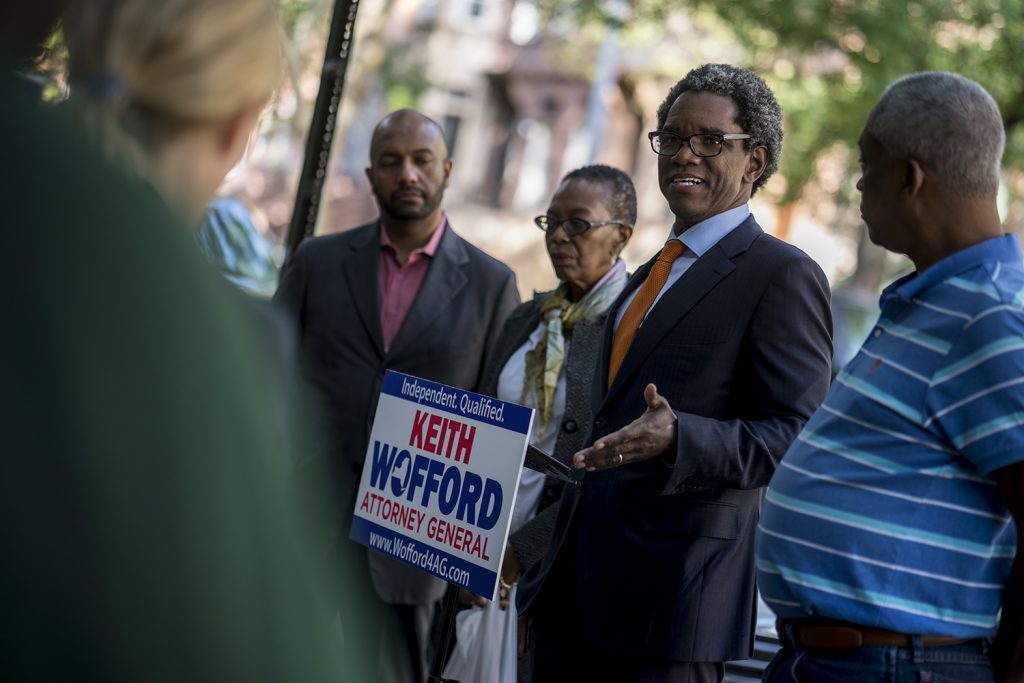Editor’s Note: The following is the 11th of a KCP investigative series by reporters Kelly Mena and Stephen Witt on how New York City is taking paid off properties from longtime small property owners, including black and brown seniors, and giving them to connected non-profit and for-profit developers as gentrification sweeps across Brooklyn.
Mayor Bill de Blasio last week dismissed calls for a temporary freeze of the Department of Housing Preservation and Development’s (HPD) Third-Party Transfer (TPT) program, saying the completely black-owned properties worth million of dollars are being seized without any compensation because of “health and safety” issues.
De Blasio’s stance comes in the wake of the continuing KCP series, which has found HPD seizing of four completely paid off properties – three of which are black owned and one of which is a co-op building in which six working-class Latinos own.
In all four cases, the owners produced similar documentation of property taxes paid that was late or never accredited to their account, discrepancies about due process notification and what constitutes a “distressed property,” and lack of transparency on HPD’s part concerning why some neighborhoods were targeted in the program and the racial demographics of the owners.

The investigative series had led Democratic Attorney General candidate Letitia James to call for a temporary freeze on the program, and her Republican opponent Keith Wofford, to call for an independent investigation.
“We have met with African-American homeowners who’ve had their properties seized by HPD without notice, even though owners had millions of dollars in equity. These actions by HPD, basically stealing properties from black owners, raise the prospect that the program is being abused. Mayor de Blasio must immediately address these foreclosures by freezing any further action by HPD and requesting an independent review into the department’s activities. It’s time for Mayor de Blasio and HPD to come clean,” said Wofford.

James thinks there should be a temporary freeze on the program out of real concern that homes are being included in the program or foreclosed upon without sufficient notice to the homeowner.
But when questioned about the program on WNYC’s Brian Lehrer show on Friday, De Blasio said there are fewer than 100 properties in the entire city that are currently going through the program.
“It typically is related to what has been real health and safety issues that have gone unaddressed for years and that is a concern for our community regardless of the demographics of who owns or what community we are in,” said de Blasio.
The TPT program dates back to the 1980s when New York City had many blighted and burned out properties. Over the years the program has been amended in its definition of distressed properties, most recently in 2015.
The program designates qualified sponsors to purchase and rehabilitate distressed vacant and occupied multi-family properties in order to improve and preserve housing affordable to low-to moderate-income households.
The latest round of takings under the de Blasio administration took place last November just a month shy of Christmas in which 64 properties – predominately in black and brown neighborhoods in Brooklyn – were seized as part of a foreclosure judgement on the same date.
Once taken the properties are given to the city-affiliated Neighborhood Restore Housing Development Fund Corporation (HDFC), who in turn give them to often connected non- and for-profit developers.
De Blasio spokesperson Jane Meyer said the TPT program is a tool of last resort to protect tenants and there are no plans to suspend the program.
“It is used in extreme circumstances to fix buildings that landlords refuse to maintain. HPD conducts extensive outreach to owners and offers assistance to correct conditions and prevent foreclosure. For properties with persistent issues, this is the best path forward to improve conditions and ensure long-term affordability for residents,” she said.
But attorney Yolande I. Nicholson, who heads the New York State Foreclosure Defense Bar, said it is clear that the city has not acted in line with the spirit of its own distressed property law, and there are loads of questions in the Bar as to whether the city acted within the letter of the law.
“The city seems to have set aside the original intent of the law — to preserve ownership, while stabilizing tenancies at all buildings. and foreclosing only on those buildings that are truly blighted because of unscrupulous or neglectful landlords — to advance a purpose that the best of legal minds have yet to locate in the tenets of the law,” said Nicholson.
“Where is the authority for the city to advance an affordable housing program on the equity of black and brown property owners who have traveled back and forth to HPD and DOB to pay their taxes and charges? Why was fifty percent of the 64 properties taken by in rem foreclosure judgment in 2017 primarily small residential and small tenancy properties located in Bedford Stuyvesant, Crown Heights, Bushwick, Brownsville and East New York? Why were the community organizations funded to save homeownership from foreclosure invited to partner with the city in this taking of private property, disruption of tenancies, and loss of family income and inheritance?
“At this juncture, the city must be held to the burden of demonstrating that each of their agencies involved acted in accordance with the specifics and spirit of the city’s distressed property laws, or in keeping with the due process provisions of the New York State Constitution,” Nicholson added.






